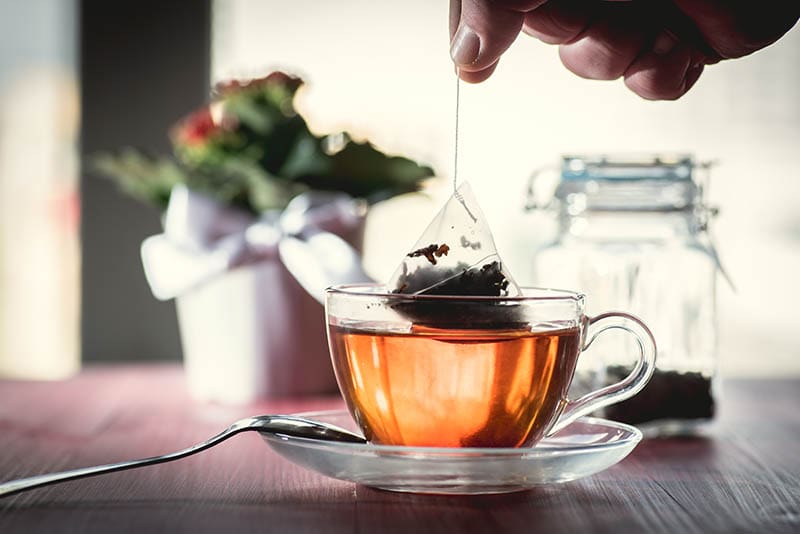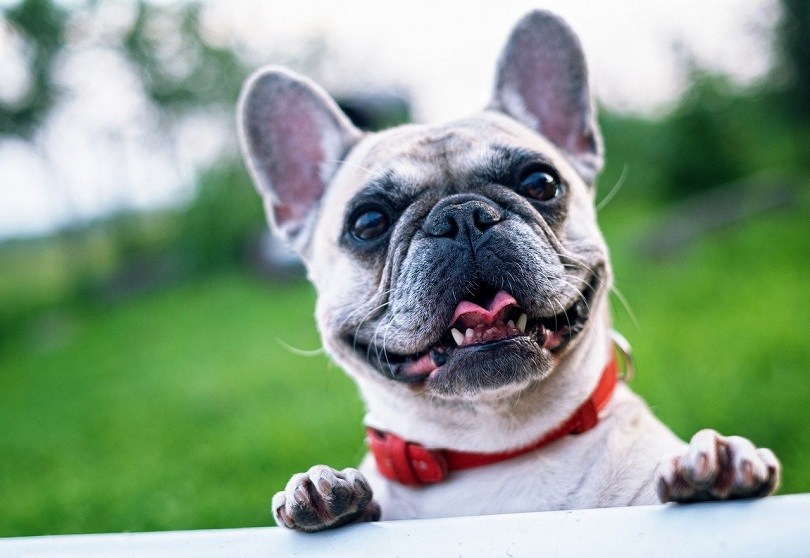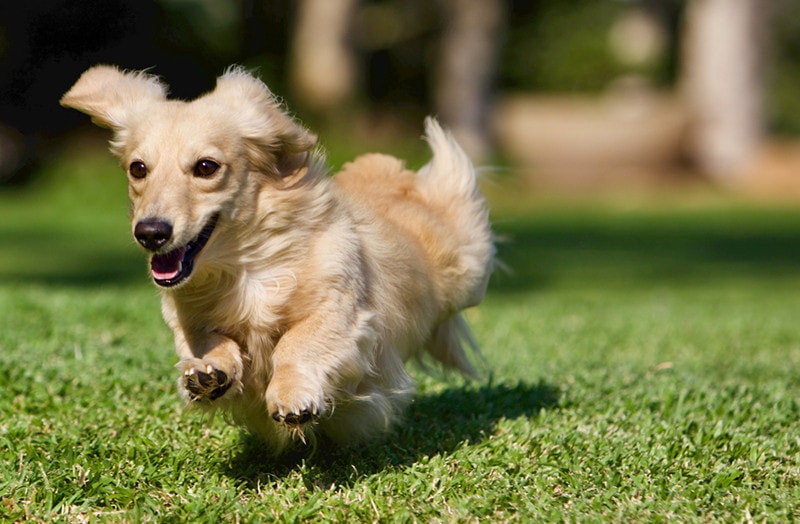Cavanese (Cavalier King Charles Spaniel & Havanese Mix): Pictures, Info, Traits & Care
Updated on
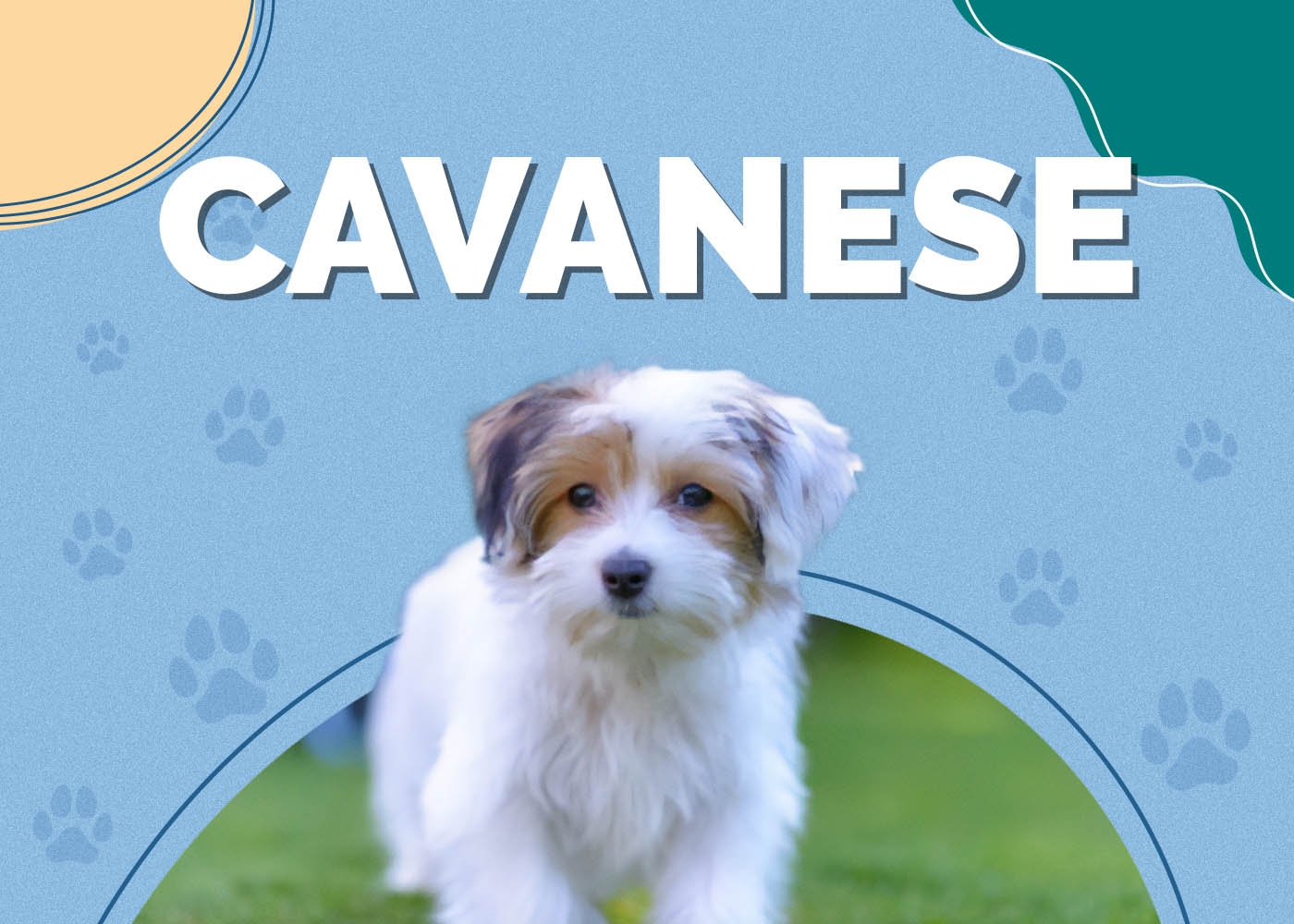
If you cannot decide between getting a Cavalier King Charles Spaniel or a Havanese, then meet the Cavanese. The Cavanese, also known as the Havalier, is a designer dog breed with a small size and adorable characteristics. These friendly dogs are low-shedding and make great family pets, so keep reading to find out more about them.
Breed Overview
| Height: | 10–13 inches |
| Weight: | 8–15 pounds |
| Lifespan: | 12–16 years |
| Colors: | White, pied, tan, fawn and black |
| Suitable for: | Families with children looking for a low-shedding dog |
| Temperament: | Affectionate, loving, loyal, and easy to train |
The Cavanese is a mix of two purebred dog breeds—the Cavalier King Charles Spaniel and the Havanese. Both of the Cavanese’s parent breeds are kept as popular pets around the world. The Cavalier King Charles Spaniel is a renowned British toy dog with a silky coat, whereas the Havanese is a small, Bichon-type dog.
Breeding the Cavalier King Charles Spaniel and Havanese together results in a small, teddy-like designer breed with the same good-natured temperaments as their parents.
Cavanese Breed Characteristics
Cavanese Puppies
Cavanese puppies are incredibly energetic and playful, and they crave attention from their owners. If you decide to get a Cavanese puppy, you will need to spend at least an hour or two every day attending to their needs. Cavanese puppies enjoy going for short walks in a park or dog-friendly neighborhood and playing with various toys.
As with any other puppy, you will need to train your Cavanese puppy and help them overcome any separation issues. Cavanese puppies have a high-pitched yappy bark that some people might find irritating, so keep this in mind if you prefer a quiet dog breed.
Finding Cavanese puppies for sale or adoption is challenging, so your main option is to purchase them from a reputable breeder.
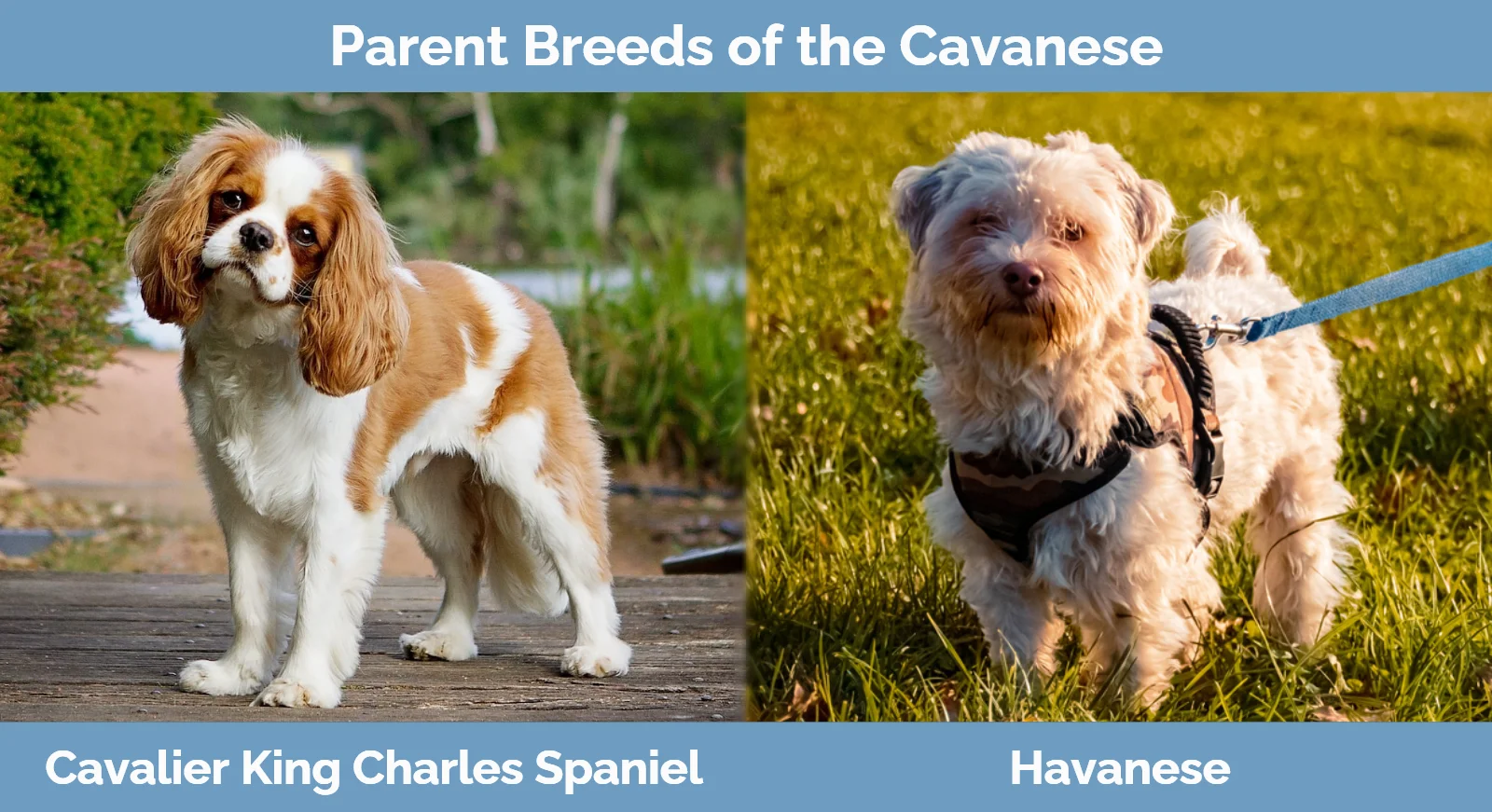
Temperament & Intelligence of the Cavanese
The Cavanese has the same friendly and loyal temperament as the Havanese and Cavalier King Charles Spaniel. They are loyal and captivate their owners with their affectionate temperaments.
Cavanese dogs love spending time with their owners, whether it is through cuddling, playing, or going on a walk. They can be boisterous and energetic, which makes daily exercise essential. You might find that Cavanese dogs will zoom around the house and over your furniture when they are in a playful mood. This is common behavior in many toy dog breeds with high energy levels.
Furthermore, the Cavanese is relatively easy to train and can learn the same commands as any other dog breed.
Are These Dogs Good for Families? 👪
Yes, Cavanese dogs are suitable for individuals and families with children. They are perfect for apartments thanks to their small size and easy trainability. Plus, Cavanese dogs are very friendly dogs and enjoy companionship.
They are rarely aggressive and are not known to bite. If you have young children in your home, it is a good idea to teach them the appropriate ways to handle the Cavanese. This will help prevent any young children from irritating the Cavanese to the point of biting or unnecessary stress.
Does This Breed Get Along with Other Pets?
Early socialization is important if you want your Cavanese to get along with other pets and people, and to become comfortable in their environment. Most Cavanese dogs have no issue adjusting to living with other pets like cats and dogs. However, they do not always get along with small pets like rabbits, guinea pigs, or parrots because of their hunting instinct.
It can take a while for some Cavanese to adapt to living with cats, especially if they have no prior socialization with them. Cavanese dogs are naturally curious, so they have no issue going to inspect new pets in the home. Most of the time, they are just looking for a new playmate.
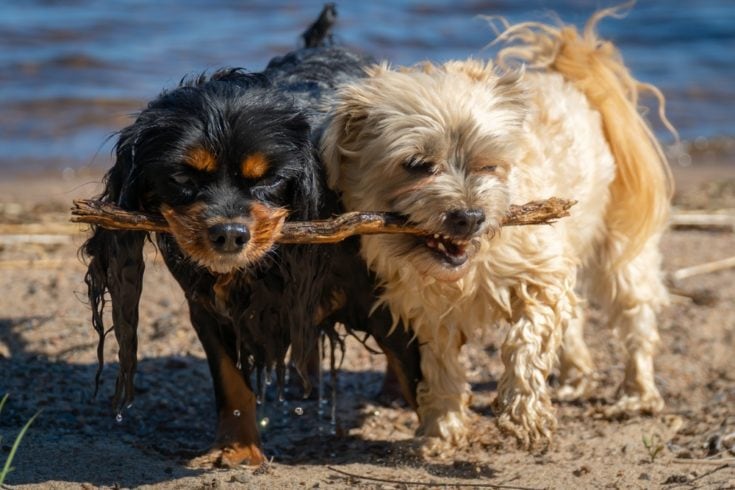
Things to Know When Owning a Cavanese:
Food & Diet Requirements 🦴
A healthy and balanced diet is essential for the Cavanese. They generally need the same diet as the Cavalier King Charles Spaniel or Havanese. The type of diet you feed your Cavanese is up to you, whether it be raw, canned, kibble, freeze-dried, or homemade.
The most important consideration when choosing a suitable food for your Cavanese is one that offers all the essential nutrients they require to be healthy. Not all dog foods are created equal, so it is important to do plenty of research on the best diet for your Cavanese and their lifestyle.
Exercise 🐕
As we mentioned above, the Cavanese is an energetic dog breed and benefits from daily exercise. Cavanese dogs do not require vigorous heavy exercise as their small bodies are not suited for it. Furthermore, vigorous exercise may be damaging to your Cavanese puppy’s growing body.
The best ways to exercise your Cavanese are by playing with them, taking them for short walks, and allowing them to explore in a dog-safe park. Around 20 to 40 minutes of low-impact exercise is recommended for Cavanese.
Exercise has many benefits for this designer breed, but the most noticeable ones are weight maintenance and improved physical health. Exercise is an outlet for your Cavanese dogs’ pent-up energy and keeps them entertained, so it has a role in preventing boredom too.
Training 🎾
Training a Cavanese is relatively easy thanks to their intelligence and high trainability. You can start training your Cavanese puppy once they are about 8 to 12 weeks old. However, socializing with your Cavanese puppy can start when they are 3 weeks old.
Most of their early socialization will begin with their breeder, which will prepare them for their training in your care. Training sessions should be kept short yet productive with Cavanese dogs, as they can get bored and distracted from long training sessions. Split their training into two or three 10 to 20-minute sessions during the day rather than one long session.
Positive reinforcement is recommended for Cavanese dogs to reward desired behaviors during training. You do not want to punish your Cavanese unreasonably or make them feel scared during training to “assert dominance”.
Grooming ✂️
Cavanese dogs have soft, silky coats like their parents. Their coat is one of their most adorable features, but it does require regular grooming to keep it in good condition. You can either groom your Cavanese yourself or take them to a professional groomer depending on your schedule. If you put off grooming your Cavanese for too long, their coat can become dull and matted from a buildup of dirt and oils.
Cavanese dogs should be brushed at least once a day, ideally using a slicker brush. They also require baths every few months to keep their coat fluffy and clean. Furthermore, Cavanese dogs need to have their nails trimmed at least once a month to keep them in a manageable shape.
Health and Conditions 🏥
Cavanese dogs might be prone to the same health conditions as the Cavalier King Charles Spaniel or Havanese. When bred well and cared for properly, most Cavanese dogs could suffer from fewer health conditions throughout their lifetime.
- Cataracts
- Ear infections
- Hot spots
- Hip dysplasia
- Heart mitral valve disease
- Liver shunts
- Legg-calve-perthes disease
- Syringomyelia
Male vs Female
The main differences between male and female Cavanese dogs are their physical traits and hormone-related behaviors. Male Cavanese dogs might be slightly taller and slenderer, while the females may weigh a bit more.
As with most dogs, hormones play a major role in a dog’s behavior. Unspayed female Cavanese dogs are driven by estrogen and testosterone for unneutered males. Female Cavanese dogs typically go into heat (estrus cycle) at about 6 months of age because they are a smaller breed. They may experience estrus cycles about three times a year unless they are spayed.
3 Little-Known Facts About the Cavanese
1. The Origins of the Cavanese are Unclear
The exact origins of most designer dog breeds such as the Cavanese are unclear. However, they are believed to have developed during the 1980s around the same time breeding different purebred dogs together became popular.
2. Cavanese Dogs Are Categorized Into Different Generations
As with most designer breeds, Cavanese dogs can be categorized into different generations. The generation your Cavanese is categorized in can influence their physical traits and cause variations between Cavanese.
3. The Parent Breed (Havanese) Is the National Dog of Cuba
The purebred parent breed used to create the Cavanese, the Havanese, is the national dog of Cuba. They are called “Bichon Havanese” in Cuba and were originally developed there.
Final Thoughts
The Cavanese is a small designer breed with two well-known purebred parents. Their small size makes them suitable for apartments and as a lapdog. Their friendly and loyal temperaments make them suitable for families with children and other dogs or cats.
Caring for a Cavanese is no different than it would be to care for a Havanese or Cavalier King Charles spaniel. The most important aspects of their care would be a healthy diet, regular exercise, and sometimes daily grooming.
Featured Photo Credit: michaelheim, Shutterstock



